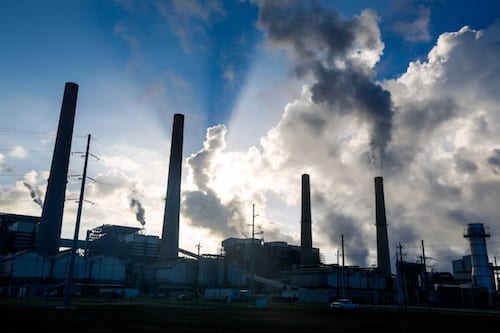
The dream of carbon capture and storage (CCS) continues to keep the coal industry and its political backers hopeful for the future.
But at what cost?
In the last couple of months we’ve had:
Groups call to retro-fit Victoria’s brown coal fired power stations;
The Victorian government use tax-payer money to partially finance the seismic survey of Gippsland’s Ninety Mile Beach to determine whether off-shore CCS is commercially viable;
And the federal Senate Standing Committee on Environment and Communications call for public submissions to federal Environment and Energy Minister Josh Frydenberg’s bill to amend the Clean Energy Finance Corporation Act to allow it to finance CCS technology.
So let’s remind ourselves of three solid reasons why CCS is not an option to reduce climate pollution and curtail climate change.
One: It doesn’t work.
Globally and at home, CCS has consistently failed to deliver on its promise to reduce future carbon dioxide emissions. These failures have come at eye-watering expense to companies and governments alike. They include:
- Southern Company, owners of the Kemper “clean coal” plant in Mississippi, US, which spent some US$7.5 billion before pulling the plug after years of research and years of technological failure;
- Boundary Dam CCS plant in Saskatchewan, Canada, which secured half or less than half of the CO2 it promised to capture, ran way over-budget and faced multi-million dollar payouts for failure to deliver on its contractual terms;
- The AU$4.3 billion ZeroGen CCS project which the Queensland government abandoned after losing $96.3 million on funds to retrofit the Stanwell power station.
For communities that live around power stations, the promises of CCS are attractive because they suggest the lives of coal-fired power stations can be prolonged in a way that keeps people in jobs and reduces pollution.
The lives of power stations should not be prolonged. These are old, unreliable machines that need to be phased out to protect the climate and people’s health. These communities need certainty about their future, not false hope about propping up a technology that is past its use-by date.
Two: investors are unlikely to fund CCS because it’s more expensive to produce energy with CCS than without.
There’s basically no incentive for the private sector to invest in technology that is unlikely to provide a decent financial return in the short-mid term, if at all.
CO2CRC, the Australian CCS research organisation, which receives considerable government funding, promotes investment in retrofitting existing coal-fired power stations in Victoria’s Latrobe Valley.
Even this organisation of CCS true believers estimates that CCS retro-fits will cost anywhere from $1.48-$2.45 billion per boiler – and that’s for an existing “high efficiency” brown-coal power station. Australia doesn’t have “high efficiency” power stations and is unlikely to build them.
Even if such projects were to get up and running in Australia, you can be absolutely certain these expenses would be passed straight on to consumers, who already bear astronomical power bills.
Three: even if CCS was deemed successful in the short-term and employed economically at scale, CCS will not stop CO2 entering the environment.
In order for CCS to be successful in the long term, the storage systems that hold the carbon need to last in perpetuity to prevent leaks. To put it another way, for CCS to work, it needs to hold on to the captured pollution forever.
CCS facility or storage sites will eventually leak and release carbon pollution into the atmosphere and environment. They could fail at a time when the effects of climate change cannot be reversed.
Such leaks pose toxic air pollution risks to people and the environment.
Leakage of CO2 and increased levels oftoxic air pollutants such as nitrogen dioxide and sulphur dioxide, due to additional fossil fuels required for the CCS process, could cause and contribute to a range of costly adverse health impacts to humans and agriculture, including the acidification and eutrophication of land and water.
Even if the technology worked well, there’s absolutely no guarantee huge stockpiles of carbon won’t eventually cause the very problem they were designed to mitigate.
CCS fails from a technological perspective, an economic perspective, and a pollution reduction perspective.
Bronya Lipski is a lawyer at Environmental Justice Australia. EJA’s submission to the Senate Standing Committee on Communications and Environment on the Clean Energy Finance Corporation Amendment (Carbon Capture and Storage) Bill 2017, and other submissions on this amendment, can be seen here.










